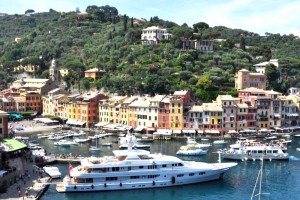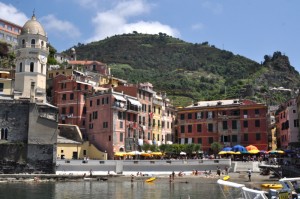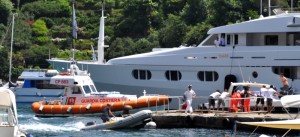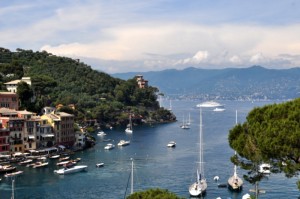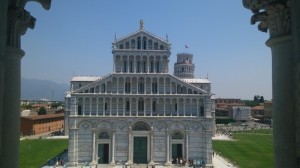June 1 – 4, 2015: Italian Riviera (Portofino, Cinque Terre, Sarzana and Leiri) & Pisa
June 1 Monday: Cinque Terre
We brought a 2-day Cinque Terre Pass for €23. Our original plan was to move our luggage to Mary Hotel (2-star hotel of better quality than Aurora Hotel) before taking a train to Cinque Terre where we would join a guided walking tour in Riomaggiore at 10:45am.
Unfortunately, we did not look at the timetable carefully missing the schedule for Sundays/holidays. When we did not find the train and departure platform on the screen, we asked a lady in uniform who told us to go to Platform 3. We noticed the train would be heading to Genoa i.e. the right direction and got on. When I realised it did not look like a slow regional train, I immediately asked a conductor whether the train would stop at Riomaggiore. The door was closing when he said “the next stop is Genoa”. The conductor tried to open the door to let us off. But it was too late. As he knew we had boarded the train by mistake, he did not ask us to pay and only reminded us to buy a ticket to return to Riomaggiore.
We could not stop laughing all the way to Genoa. Luckily, a fast IC train takes less than an hour to reach Genoa and there should be enough time to catch the 10:04am regional train from Genoa Central station to Cinque Terre (the same train we took the day before). The IC train was late and we worried we might miss the 10:04am train. When it stopped at Genoa, we realized it is the station before Genoa Central: we might still have a chance to catch it. We were right: the 10:04am train coming from Genoa Central was late and passengers were still boarding. We ran as fast as we could and managed to hop on just in time. What a fun train day!
What next? Instead of going back to Cinque Terre, we decided to visit Camoglia and Portofino which are close to Genoa. Camoglia is a small fishing village with about 6,000 inhabitants located on the west side of the peninsula of Portofino on the Gulf of Paradise. In the Middle Ages, it was a considerable seaport called the ‘city of a thousand white sails’. In 1880, it had a population of over 10,000 and 500 patented ship captains. Today, the village with colourful houses is a touristic spot.
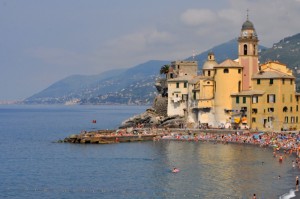 |
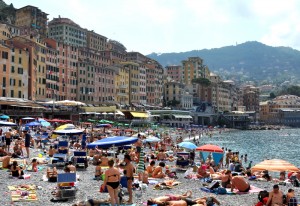 |
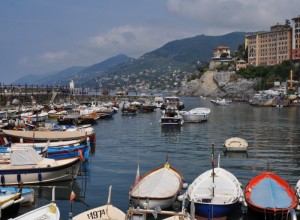 |
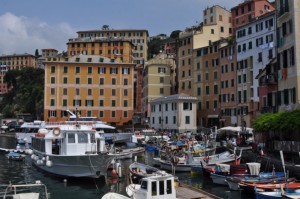 |
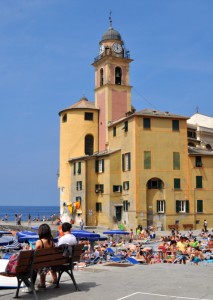 |
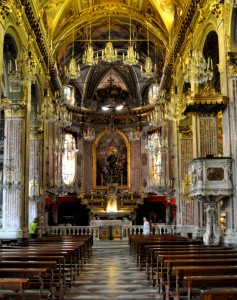 |
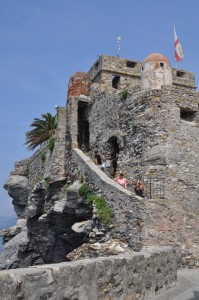 |
After a leisure stroll for an hour, we boarded the next train and reached Santa Margherita a few minutes later. From here, we caught a bus just before 1pm to Portofino a small fishing village with a picturesque harbour and clustered with colourfully painted houses. It has an interesting history. After 1229, it was part of the Republic of Genoa and was sold to the Republic of Florence in 1409. In 1815, it became part of the Kingdom of Sardinia and from 1861, of the unified Kingdom of Italy. In the late 19th century, British and other Northern European aristocratic tourists began to arrive. Today, it is one of the top destinations in region.
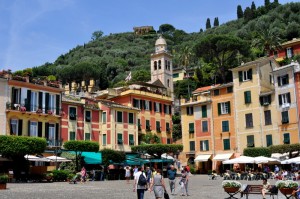 |
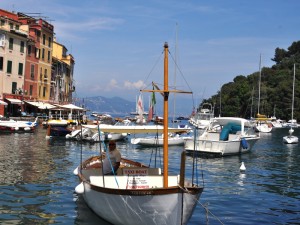 |
We walked around the village which is now filled with shops, cafes and restaurants. We had an excellent lunch at a restaurant recommended by Insight Guide for €80. We then walked uphill to visit the Church of St George which has a commanding view of the bay.
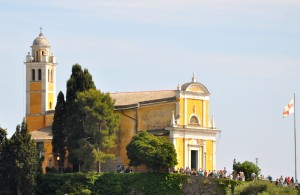 |
|
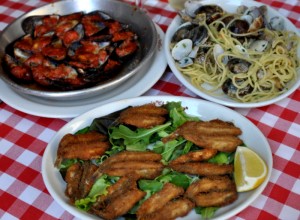 |
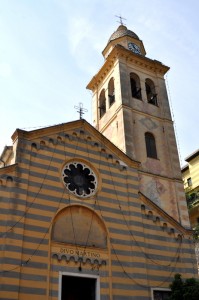 |
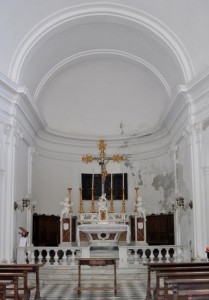 |
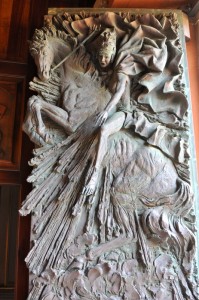 |
A friend has highly recommended us to have afternoon tea in Hotel Splendido located in the former home to a Benedictine monastery. It has been a hotel for the rich and famous since 1902. We had a table in the beautiful terrace overlooking the bay. We paid €30 for the lemon tea and enjoyed the wonderful view and atmosphere for over an hour. We even had a free ride back to Portofino to catch our bus to Santa Margherita. What an exciting morning and a wonderful and relaxing afternoon in Portofino!
June 2 Tuesday: Cinque Terre
We took the 8:50am regional train to Monterosso (the first village at the western end of Cinque Terre). This village is renowned for its architecture and medieval centre. As the guided tour would not start till 10:45am, we strolled along the coast and the village for over an hour on our own.
We returned to the station and were delighted to meet our guide. She told us briefly about the history and geography of the region, the history of the village which had a powerful defense system with a tall watch tower. She took us to the cathedral and two churches belonging to the black and white brotherhood which cared for the dead and destitute respectively in the past.
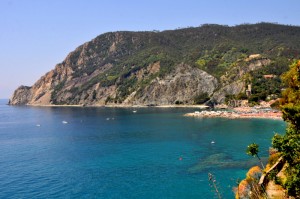 |
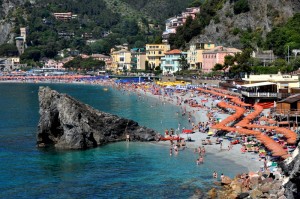 |
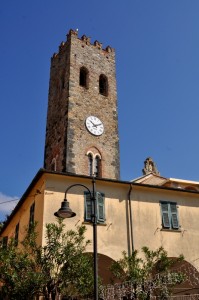 |
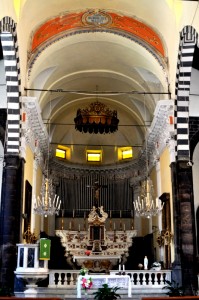 |
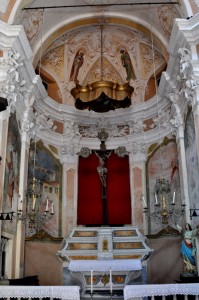 |
The tour ended at a lookout point with a statute of St Francis where we could see the whole bay. We walked up to the top of the hill and visited a small church before returning to the station.
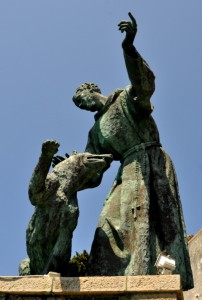 |
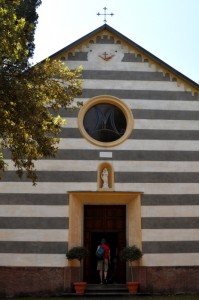 |
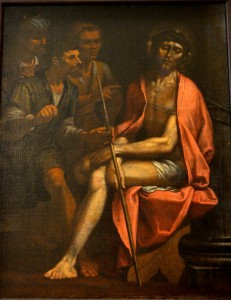 |
The five villages are connected by train which runs hourly. We arrived at Vernazza before 2pm. There is only one street which runs from the station to the square and a small bay. The topography is outstanding: tower-like pastel-coloured buildings flank the narrow alleyways leading down to the main square, the Church of St. Margherita and the anchorage in a small bay.
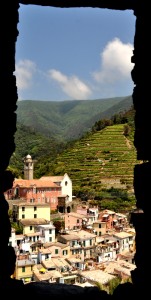 |
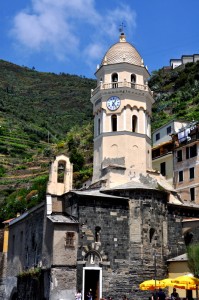 |
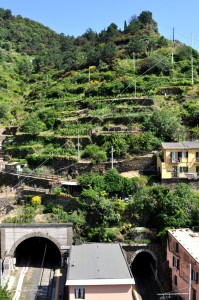 |
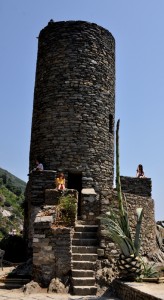 |
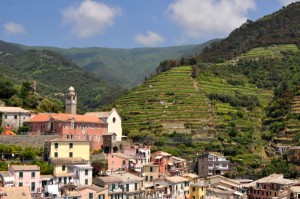 |
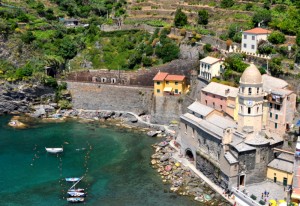 |
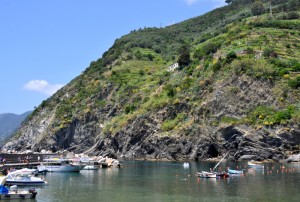 |
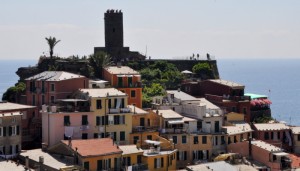 |
I find this village most atmospheric, delightful and lively. We were thrilled when we saw fresh apricots and cherries from a street vendor and paid €8 for two kilos of fruits. People whether sitting, standing or walking, were all having something (fruit, ice-cream, fried fish or sandwich) in their hand or mouth! We walked through narrow alleys and reached a small fortress above the bay. The views from the tower are fabulous. After a leisure stroll, we got a table in a popular restaurant at the square by the bay and ordered mussels, seafood, pasta and local wine. The bill came to €60: great value!
Then we were back on the train to Corniglia. This small village is quiet with few tourist. As it perches on a picturesque cliff 100ft high, a free shuttle service is provided with the Cinque Terre Pass.
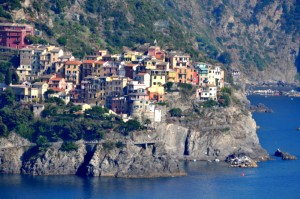 |
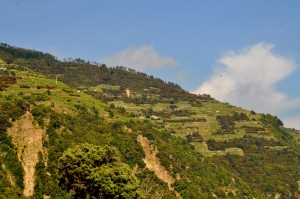 |
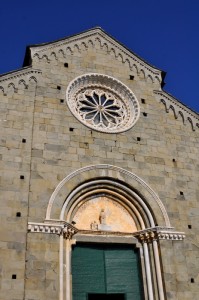 |
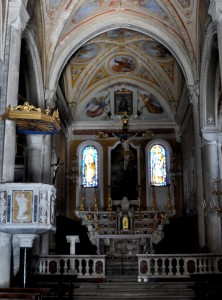 |
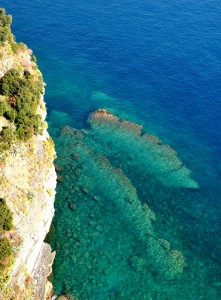 |
The sun sets between 8 and 9pm this time of the year. Hence we still had time to stop at Manarola before returning to La Spezia. Most of the house here are built on the cliff side with the surrounding hillside covered by vineyards and olive trees. After a quick visit to the cathedral and bell tower located above the station, we went to see the main street lined with colourful houses below the station.
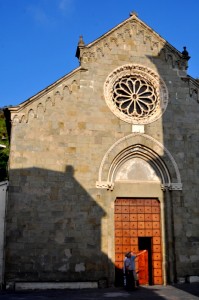 |
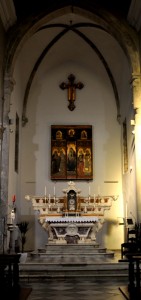 |
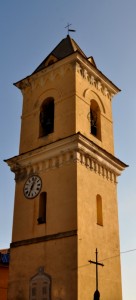 |
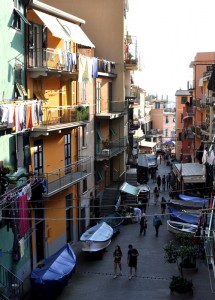 |
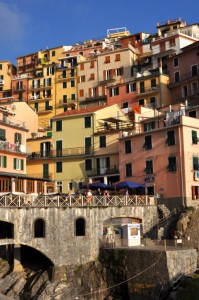 |
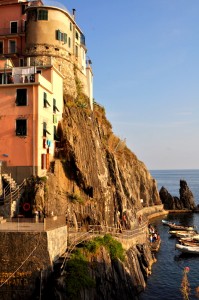 |
As we were not hungry, we had a light supper with a steamed fish, cooked vegetable and noodle in the Chinese restaurant for €20. Great value.
June 3 Wednesday: Riomaggiore, Sarzana & Leiri
Tourism is the main income earner for the Italian Riviera. The tourism office provides good free maps and organises free guiding tours/hikes. Today, I joined a guided hike from Riomaggiore to Manarola via Beccara while Denise and Ellen visited a museum in La Spezia.
We took the 8:12am train to Riomaggiore which is caught between two steep terraced hills descending into the sea in steep cliffs. We enjoyed strolling around this photogenic village on our own. A common sight here is having many fishing boats on the street. A walk along the Via dell’ Amore would be a perfect way to appreciate this picturesque village and the topography and landscape of the region.
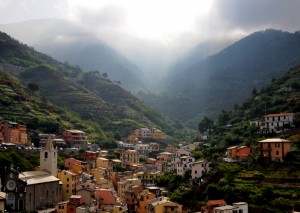 |
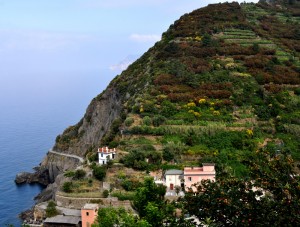 |
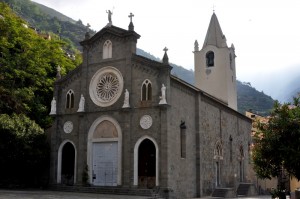 |
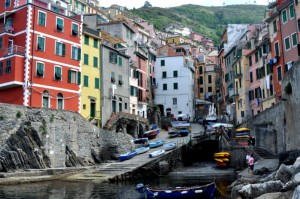 |
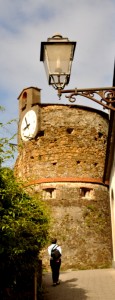 |
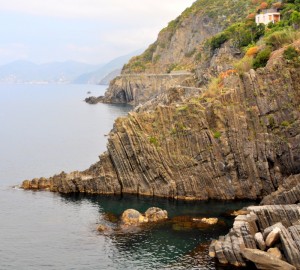 |
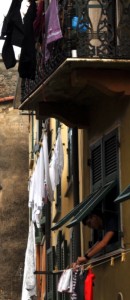 |
At 10:30am, I set off with five other hikers and a guide. Despite the short distance (1km), we took more than an hour and a half to reach Manarola because we stopped every ten to 20 steps to enjoy the views, catch our breath and listen to our guide.
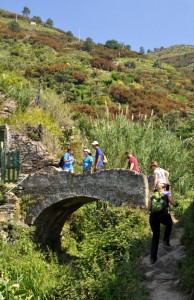 |
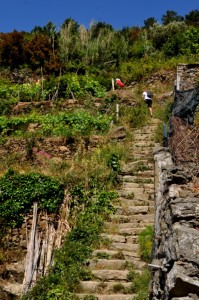 |
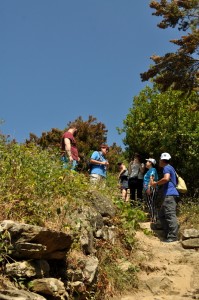 |
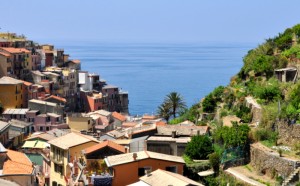 |
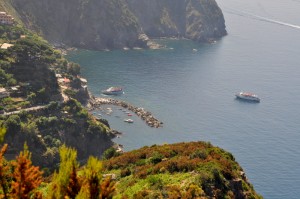 |
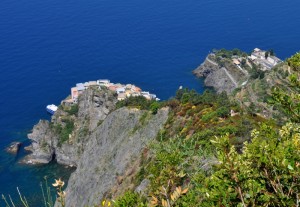 |
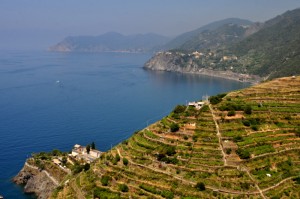 |
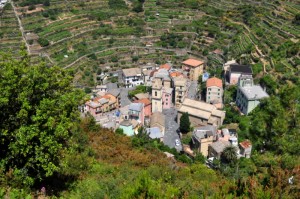 |
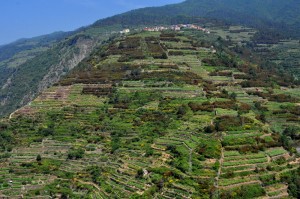 |
We arrived at a restaurant for wine tasting just before 12:30pm. I paid €7 and expected to sample a few types of local wine. I was wrong: I was given only a glass of wine. Disappointing. I took the 1:30pm train back to La Spezia and met up with Denise and Ellen in Mary Hotel.
Then we made our way to Sarzana, a pretty and well-preserved medieval town nearby by train. We arrived around 3pm. The town looked dead as all shops and restaurants and many attractions were closed for siesta.
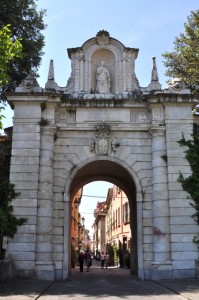 |
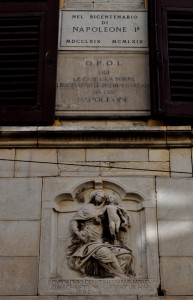 |
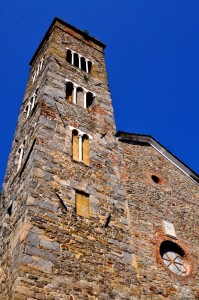 |
The old town centre is small stretching from Porta Romana to Piazza Matteotti along Via Mazzini which is flanked by many impressive grand old buildings. We visited two churches (Cathedral S. Maria Asunta and Pieve di S. Andrea) and walked along via Bonaparte before arriving at Piazza Matteotti where the town hall and other grand buildings stand.
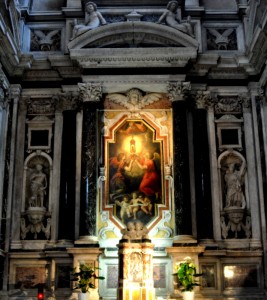 |
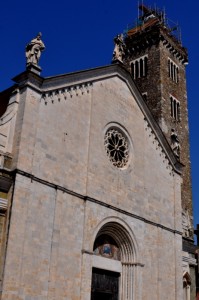 |
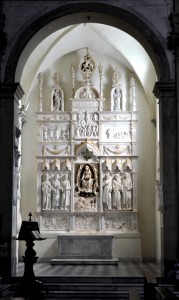 |
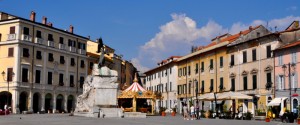 We went to Gemmi, a famous pasticceria (cake shop) on via Mazzini for afternoon tea. We paid €13 for two cups of tea, an ice-cream, two spungata and three pieces of cakes. Fantastic! Later we discovered Casa Napoleon where Napoleon had stayed is just in front of Gemmi. Another spot to be added to my Napoleon trail on this journey.
We went to Gemmi, a famous pasticceria (cake shop) on via Mazzini for afternoon tea. We paid €13 for two cups of tea, an ice-cream, two spungata and three pieces of cakes. Fantastic! Later we discovered Casa Napoleon where Napoleon had stayed is just in front of Gemmi. Another spot to be added to my Napoleon trail on this journey.
We had a leisure afternoon without any intention to visit Sarzana’s fortress. Then we took a bus to Leiri which dates back to Roman times. In the 18th century, it became a fashionable seaside town amongst English poets and writers on account of its scenic beauty incorporating many of the contemporary Roman ideals. The imposing medieval castle has now been converted into a paleontological museum.
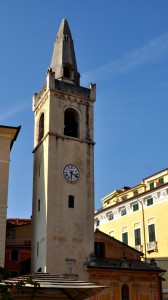 |
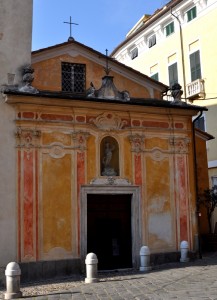 |
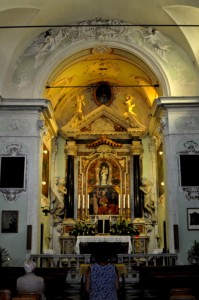 |
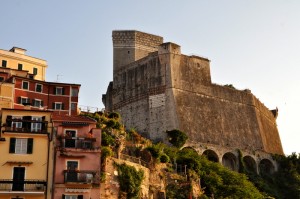 |
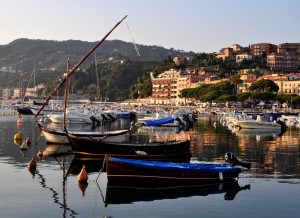 |
We found a market in the city park by the waterfront. Denise and Ellen brought a few souvenirs made of wood and a ‘lava’ cooking pan. We skipped the castle. It was 6:30pm and we were ready to eat. Unfortunately good local restaurants open around 8pm. We followed the Insight Guide again and picked Ristorante Bontà Nascote at via Cavour for dinner. Our patience paid off: we paid €90 for one of the best meals we had on this trip. The squid ink pasta and seafood are most delicious. We took the 10:20pm bus back to La Spezia.
June 4 Thursday: La Spezia – Pisa
Time to leave La Spezia (though we have not really seen much of it). We decided to visit Pisa on the way to Livorno, the port. The journey takes just over an hour.
Pisa, a city in Tuscany with a population of about 100,000 is world-famous for its leaning tower. This city has a glorious past and its wealth accumulated as one of the Italian maritime republics, had financed its remarkable architecture, churches and palaces. It is also home of the University of Pisa which history goes back to the 12th century. The Piazza del Duomo (also known as “The Square of Miracles”), the Duomo (1063), the Baptistery and the Campo Santo, a monumental cemetery which is now a World Heritage Site together with the hospital and few palaces form an impressive medieval complex. 
After leaving our luggage in the train station (€4 per piece), we took a bus to Piazza Manin and spent the next three hours in the “Square of Miracles”, one of the finest architectural complexes in the world. I was here in 1988 and could only recall visiting the piazza and the leaning tower. I vaguely remember most of the buildings in the complex were under restoration. Hence I re-visited this World Heritage Site with a combined ticket of €8.
Duomo (free entrance): the interior must have been cleaned up since my last visit. I stared at the architectural styles, paintings, mosaics and sculptures with amazement and found the pulpit (1302-1310) by Giovanni Pisano, one of the masterworks of medieval sculpture most impressive.
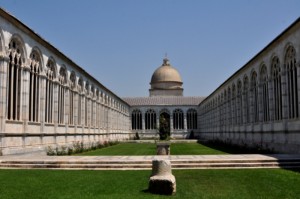 |
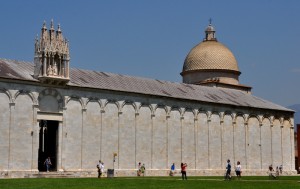 |
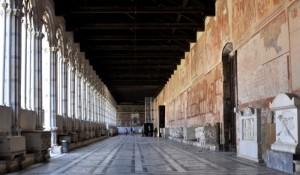 |
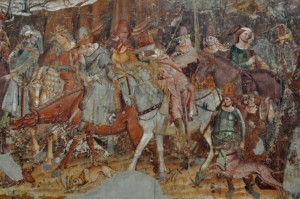 |
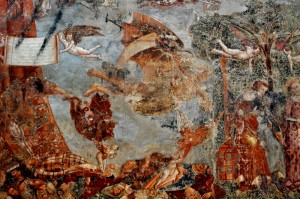 |
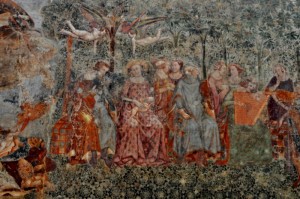 |
Baptistery: Dedicated to St John the Baptist, this Romanesque round building was begun in the mid-12th century. It is the largest baptistery in Italy with a circumference measuring 107.25m. Its interior is plain and serene is plain and serene It is the first baptistery of such size and beauty that I have visited. I went up to the upper level when a few men began to sing. The acoustic is superb: the sound and echoes are beautiful.
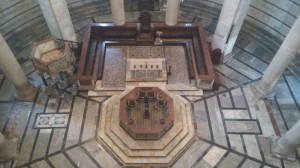 |
Campo Santo: building of a walled cemetery erected over an earlier burial ground began in 1278 and completed in 1464. The outer wall is composed of 43 blind arches and most of the tombs are under the arcades. The inside walls were once covered in frescoes (1360- 17th century) which were destroyed on July 27, 1945 by bombs dropped by Allied aircraft. After years of painstaking efforts, some of the frescoes have been restored including the famous The Triumph of Death by Buinamico Buffalmacco.
Museo delle Sinopie: The sinopias from Campo Santo which are red ocher under-drawings for frescoes made with reddish, greenish or brownish earth colour with water, are displayed here.
It was very hot and we had an ice-cream before walking down Via Santa Maria to reach Piazza dei Cavalieri with clock tower and town hall. Then we went through many narrow alleys before arriving at Piazza Garibaldi. We visited Museo Nazionale di San Matteo which exhibits sculptures and paintings from the 12th to 15th century. The collection of painting on wood is exquisite.
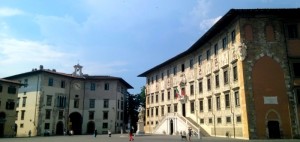 |
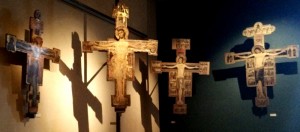 |
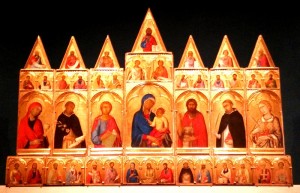 |
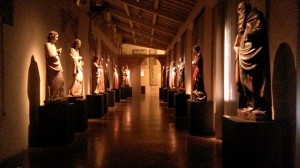 |
We were hungry as we had missed the lunch hours. So we had pasta in a local pub in a market square near Ponte di Mezzo. Then we returned to the train station via Corso Italia.
Our train left around 7:30pm and we arrived at Lovorno before 8pm. We took a taxi to the port and waited for over an hour and a half before boarding the ferry to Oblia, Sardinia. We had a windowless 4-person cabin which though small, has toilet and shower and clean beds. I had a good sleep.


